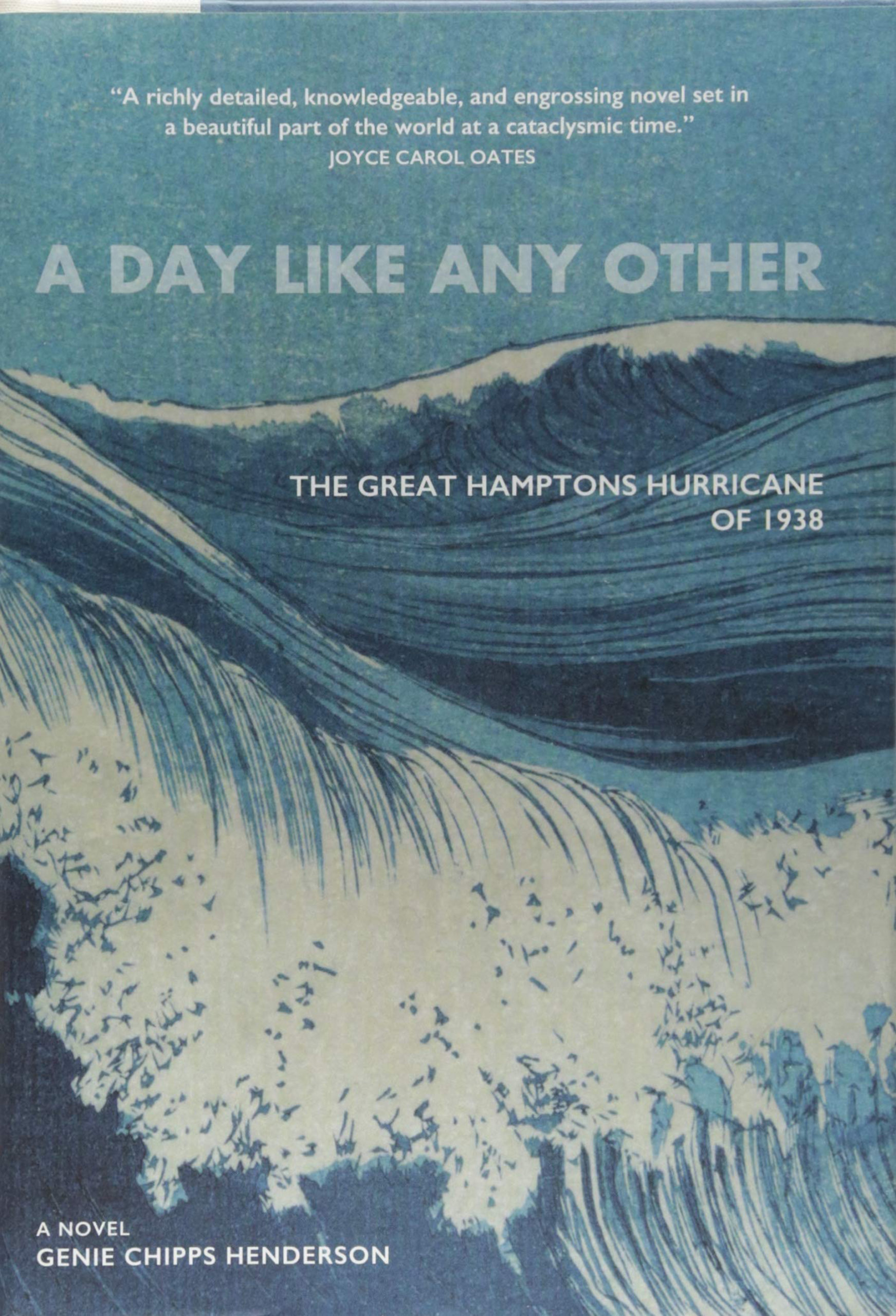A Day Like Any Other


For sure, there have been a lot of books and exhibitions on “The Long Island Express,” the devastating hurricane that hit Long Island and Connecticut 70 years ago on September 21, 1938 (“the fastest moving hurricane ever recorded”). In taking on this subject for a novel, longtime Springs resident Genie Chipps Henderson enters territory she knows well as the archivist at LTV.
She’s proud of the innovative, “extreme novelty” of the public access station when it started in the mid-1980s — homegrown, self-produced programming. She called it “the YouTube of its day.” Community members told their stories — fishermen, farmers, artists, neighbors. Some of the stories, which went back to the late 1930s, inspired her own tales in A Day Like Any Other.
As to why she considered the hurricane of 1938 as the subject for a novel, she responded, “I’m a fiction writer.” The form gave her a chance “to get behind closed doors and work with characters,” to bring intimacy to big events (her first novel was a fictionalized account of the famous photojournalist Margaret Bourke-White). In an end note, she writes that the fact that the hurricane “came without any warning, whatsoever, in the middle of the week on a day like any other” was for her “the real story and the seed of the novel.”
Creating characters let her move from research and reportage to melodrama, and to a theme about the basic humanity inherent in even the most self-centered and flawed individuals, when faced with catastrophe — a contrast to the negativity about people in our selfish, cynical age, she said.
When she came across newspaper bits about how some people unexpectedly rose to the occasion to save others, her mind “went in leaps and bounds” to imagine more about them. About half the characters in the book are based on real people she read about, she says: a woman in Westhampton who was giving a birthday party for kids who unexpectedly herded them to safety, a beach comber described by a young boy, an East Hampton historian who told about an elegant, sophisticated man who, it turns out, had grown up in servants’ quarters in East Hampton. And of course, she laughs, as someone from below the Mason-Dixon line, “How could I not create at least one person from the South?”
In titling the novel A Day Like Any Other, Henderson invokes a phrase which some older readers may associate with Walter Kronkite’s iconic TV series on CBS, which contained the added line, except “you were there.” In creating too many characters at once, however, including subsequent references to back stories, readers may have to consult repeatedly the “Our Town” section at the start of the story, where approximately 35 individuals are listed, organized by hamlet. (Raleigh, a former railroad porter, is the one black person in the book, though history records that one in five East End residents at the time were black or Native American.) The cast includes wealthy spoiled society women, their feckless businessmen husbands, their children, a sophisticated art critic, a hermit, farmers, Bonacker fishermen, a striving young artist, and a rookie weather forecaster in Washington, D.C., the only one except Crazy Tom who sniffs out trouble ahead of time.
The most effective writing in the book comes in the last chapters with arrival of the storm, as Henderson creates detailed and memorable scenes of the advancing winds and rain, sound as prominent as sight. She also heralds sections and closes the narrative with italicized one-page rhythmic riffs on the wind as a force of nature. Nicely done. Would that there were more of these poetic descriptions and fewer misguided expressions, such as hamlets that “hang like [different] jewels on a necklace,” people “layering themselves like a fancy Persian carpet over the homespun fabric of village and rural life,” or a comparison of the incubating storm off Africa to a “racing car engine, revved up and ready to go.”
The book is charmingly illustrated particularly on the inside covers with ink sketches of village landmarks and combination drawings and photos throughout. The author hopes that as a story teller, she has brought to life voices from a time before the East End became The Hamptons.



